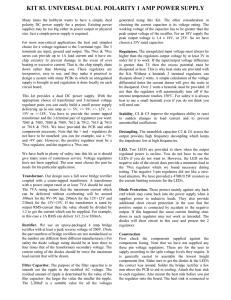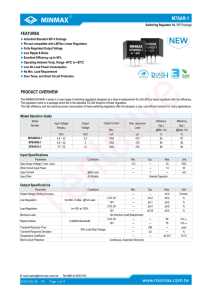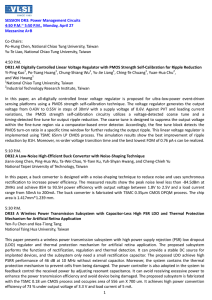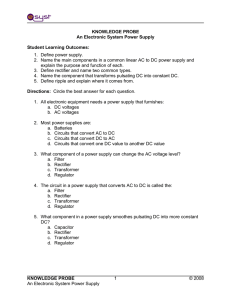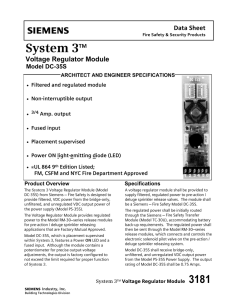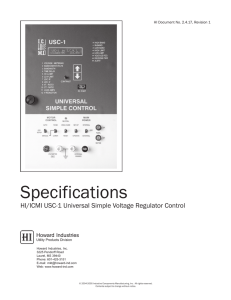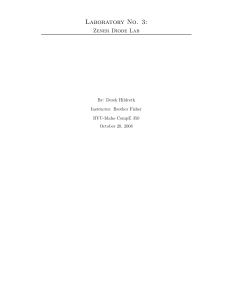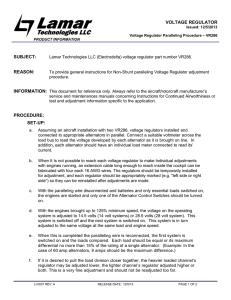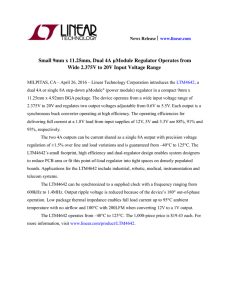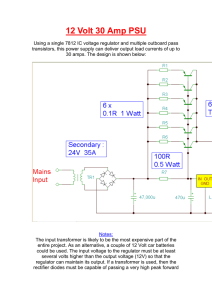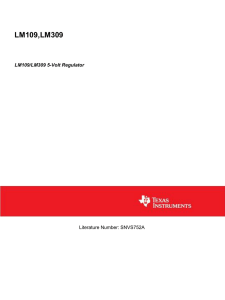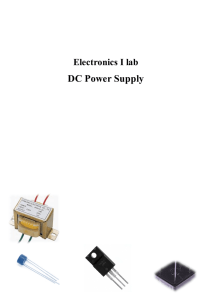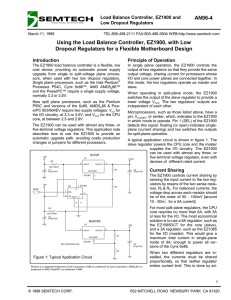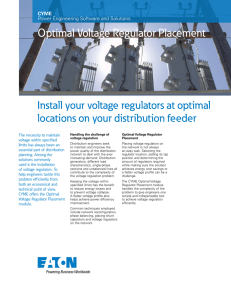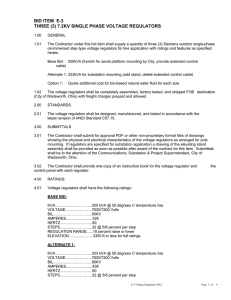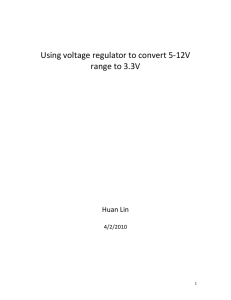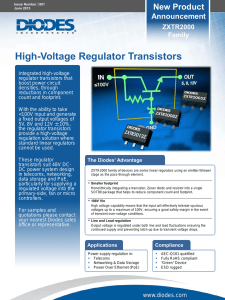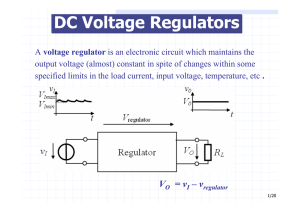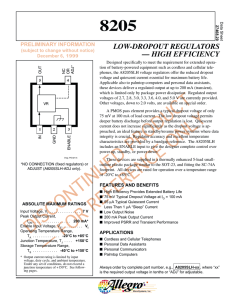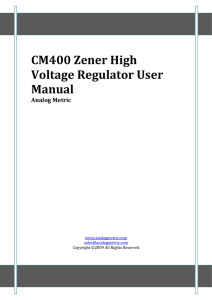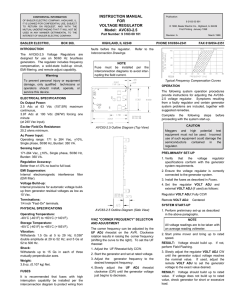Power Supply Filters and Regulators
advertisement
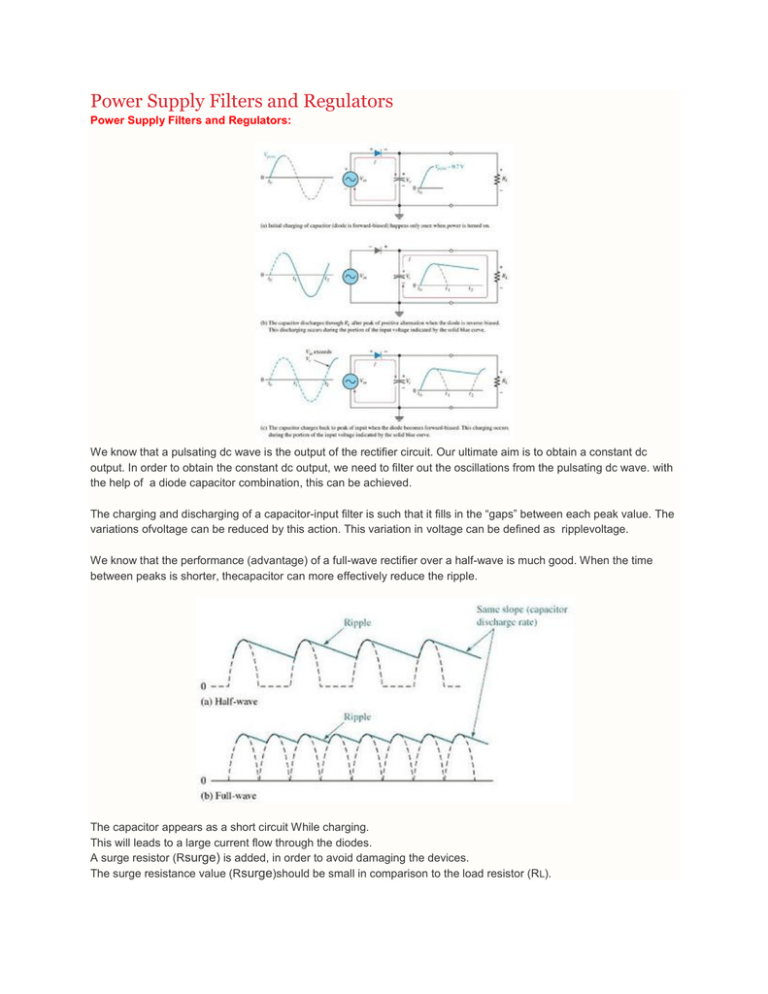
Power Supply Filters and Regulators Power Supply Filters and Regulators: We know that a pulsating dc wave is the output of the rectifier circuit. Our ultimate aim is to obtain a constant dc output. In order to obtain the constant dc output, we need to filter out the oscillations from the pulsating dc wave. with the help of a diode capacitor combination, this can be achieved. The charging and discharging of a capacitor-input filter is such that it fills in the “gaps” between each peak value. The variations ofvoltage can be reduced by this action. This variation in voltage can be defined as ripplevoltage. We know that the performance (advantage) of a full-wave rectifier over a half-wave is much good. When the time between peaks is shorter, thecapacitor can more effectively reduce the ripple. The capacitor appears as a short circuit While charging. This will leads to a large current flow through the diodes. A surge resistor (Rsurge) is added, in order to avoid damaging the devices. The surge resistance value (Rsurge)should be small in comparison to the load resistor (RL). We can use IC voltage regulator, to effectively reduce the ripple occurring after filtering. We know that a regulator consists of 3 terminals: input, output and reference (or adjust) terminal. It is better to add capacitors after (and before) the regulator circuit. Further filtering of the signal can be done by the help of a largecapacitor between the input voltage and the input terminal. A smaller capacitor is added after the regulator in order to improve transient response. Examples of positive output regulators are the 78XX series . Examples of negative output regulators are the 79XX series. Type Number (Series) 7805 7806 7808 7809 7812 7815 7818 7824 Output Voltage (in Volts) 5V 6V 8V 9V 12 V 15 V 18 V 24 V Voltage regulation can be measured by two means: Line regulation : For a given change in input voltage, how much change occurs in the output voltage. Line regulation = (Vout/Vin)*100% Load regulation : The rate of output voltage change over a certain range of current values: minimum (no load, NL) to maximum current (full load, FL). Load regulation = (VNL – VFL)/VFL 100% Source: http://www.electronicsandcommunications.com/2013/04/power-supply-filters-and-regulators.html

